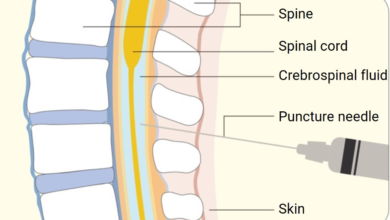Teeth Whitening: Benefits and Risks

Teeth whitening is a popular elective dental treatment that helps improve the aesthetics of an individual’s smile by using a substance to eliminate stains/discoloration. It can be done by a dentist or home remedies with the available items from the stores or shops. Even though teeth whitening appears as the way that can help you change the look bringing quite many advantages, it also has its drawbacks. It is important to understand that is there anything good which comes with it and is there anything bad which comes with it and if there are then what measures are needed or precautions that can be taken.
Benefits of Teeth Whitening
The basic advantage of laser bleaching is that one is certain to see the difference once the process is and is reassuring to know that the smile will be brighter. Improving the color of your teeth will make you look youthful and also more attractive as a smile comprises a part of the face. Self enhancement of the process is often an upliftment of one’s self-esteem that positively charges interpersonal relations, work performance and social lives.
Teeth whitening is a tooth treatment that does not cause any discomfort and usually requires no invasive treatment. The Whitening doesn’t threaten to damage the teeth like many other beams of cosmetic dentistry that might employ drilling or surgery. Teeth whitening by dentists can lead to significant changes in the shade and as little as one visit. The at-home kits are also capable of creating noticeable changes in just a few days to weeks, thus offering a relatively swift method of beautifying the teeth.
Also, much like the case with using braces, it leads to improved oral hygiene as those who go for the teeth whitening procedures keep on brushing their teeth. Again, people want to practice the best hygienic habits of brushing, flossing and visiting a Best Dentist in Karachi after going through the procedure of teeth whitening so that the whitening results will not be ruined. In professional treatments, whitening processes include dental examination, which can identify other excess dental problems such as tooth decay or gum diseases before they progress possibly to severe stages.
The methods can be divided into professional as well as those that we can use at home – bleaching kits, whiten strips, gels, and toothpaste. The provision of different forms of HRT lets people select the approach best suitable for them, their pockets, and their schedules.
Risks of Teeth Whitening
The most known side effect of teeth whitening is sensitivity of the teeth. This is occasioned by the whitening solution when it permeates through the layer of the enamel and comes into contact with the teeth nerve endings. Even though tooth sensitivity is generally transient in nature, it can be painful and affect the ability to eat hot, cold or acidic meals or drink hot and cold beverages. An approach to reducing this problem is the use of toothpaste specially designed for sensitive teeth and avoiding the consumption of hot and cold meals.
There is also the danger of gum irritation. Some of the whitening agents commonly used in professional treatments are dangerous because when applied on gums, they cause chemical burns. This can lead to some form of inflammation, itching and /or burning sensation of the skin. Adhering to the right usage of the whitening products and being very careful when applying them on the gums really reduces the chances of the patient experiencing gum irritation. Thus, the professional intervention may involve the use of protective barriers for the gums.
Consequently, blotchy whitening may be achieved if you already have dental work that includes crowns, veneers or fillings as these will not change their shade as the natural teeth will when exposed to whitening products. The intrinsic stains elicited by some medications or untreated dental ailments do not lend themselves to whitening procedures hence ringing unequal outcomes.
Excessive use of these products is dangerous since it may harm the enamel of the teeth, the outer covering. This may cause teeth to be more sensitive, more prone to cavities and even long-term health issues to the teeth. Adhering to the right usage of the products and refraining from the overuse of whiteners is important if one does not want to destroy their enamel. Supervision of professionals can also safeguard and enhance the process of treatment.
The permanent effect of teeth whitening is also not a given. Having a beautiful smile among individuals is a crucial aspect that needs periodical attention and sometimes the minor procedures. Sometimes habits like smoking or even drinking coffee, tea, or even red wine can easily neutralize the whitening impact. Maintenance treatments can also lead to additional expenses when it comes to whitening your teeth, and this is a main disadvantage.
Conclusion
Whitening of the teeth has many advantages such as: gaining an aesthetically pleasing smile, increased self-esteem and effective oral care. But it also comes with a number of risks including the sensitivity of the teeth, gum inflammation and rapture, and the risk of uneven staining. To reduce such risks it is great to adhere to certain precautions, seek professional advice and ensure proper dental health care. It is recommended to see a dentist before using a teeth whitening product to reduce the chances of using an agent that can harm your teeth and gums.





